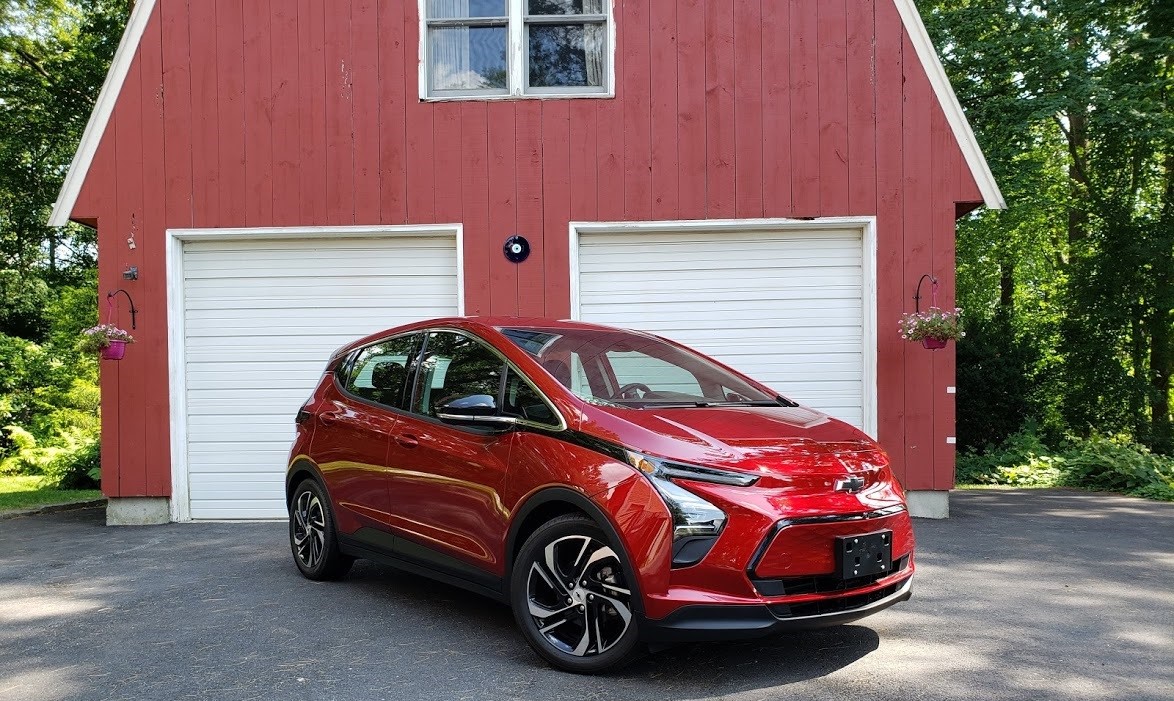Blogging about the Bolt
If you've been wondering what it might be like to actually drive an EV -- especially when it comes to range -- John Goreham shares his lengthy test drive into a rural area.
Living Electric: The Chevy Bolt as an Urban to Rural Escape Pod
Electric vehicle adoption in America is about to evolve. EVs that were once overpriced and under-featured are now quite the opposite. In my work testing vehicles and creating content as part of the New England Motor Press Association, I test everything from Dodge Hellcats with 797 horsepower to subcompact green vehicles. My personal focus remains simple; I like to report on practical cars for the masses that bring joy to their owners. One perfect example of which is the Chevrolet Bolt battery-electric vehicle.
I was fortunate to be among the first in New England to test the newly updated 2022 Bolt. Having tested three prior model year Bolts, I knew the vehicle and its capabilities. I also know my own range anxiety limits. I decided to put both to the test by venturing outside the warm and cozy EV-friendly Metro Boston area to rural New Hampshire, where public EV chargers don’t yet exist.
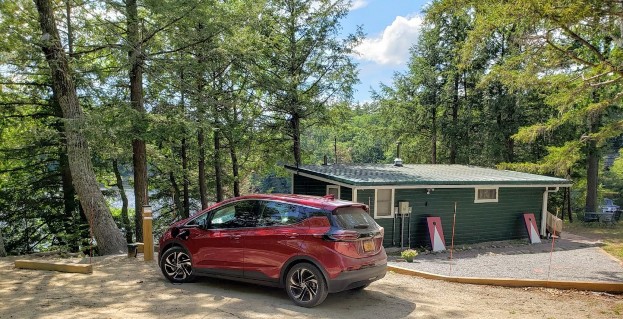
My route would take me from a few miles outside of downtown Boston, north, to a cabin my wife and I own in a small New Hampshire town about 100 miles away. Although I spend a few days a week there working, I have never taken a battery-electric vehicle because the range is an issue. Sure the Bolt has an EPA-Estimated range of 259 miles, but based on my testing, the EPA- Estimated range can vary by as much as 40% less than that in certain conditions. Two range killers include 90-degree heat and highway driving, which were the conditions for this trip.
My way of thinking about EV trips is simple; As a parent, I only take EVs to the point at which I could hop in the vehicle and drive directly to where my children are. So, I need a practical range of about 200 miles. The Bolt was within that range, but just, given the conditions and expected range reduction I anticipated.
To address this situation and make the trip more interesting, I searched for DC fast chargers on my route. To my horror, there were only two. Not two locations with multiple chargers. Two individual parking spaces in which one can charge an EV at a fast rate. One was at a Whole Foods parking lot in Bedford, New Hampshire, not far off my usual route. I made a mental map, told Google Maps to take me there using the Bolt’s nifty wireless Android Auto, and the Bolt and I headed off.
If anyone was occupying the space when I arrived, my plan was just to continue to the cabin. Upon arrival, my heart sank. Indeed, the spot was taken. It’s easy to see if a charger location you wish to use is occupied using phone apps, but I just went for it figuring a bathroom break after 40 minutes couldn’t be a bad thing.
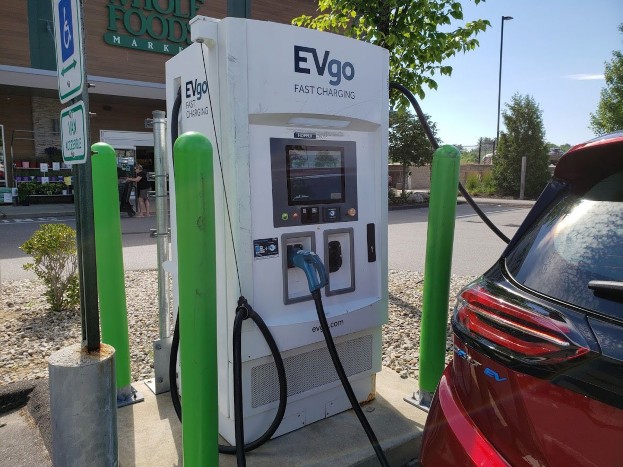
The space was occupied by an Audi Q5 and its owner, who was live-parked in the spot. Audi makes some plug-in hybrid electric vehicles (PHEVs), but this one appeared to have no charge cord attached. I parked in the aisle and walked over. A very nice lady was looking at me with some apprehension. I spoke politely and asked if she was planning to charge in the spot completely covered in a charging symbol with a big sign that said: “EV charging only.” She replied she was not charging and was happy to move. Why she opted to park in that spot will forever remain a mystery.
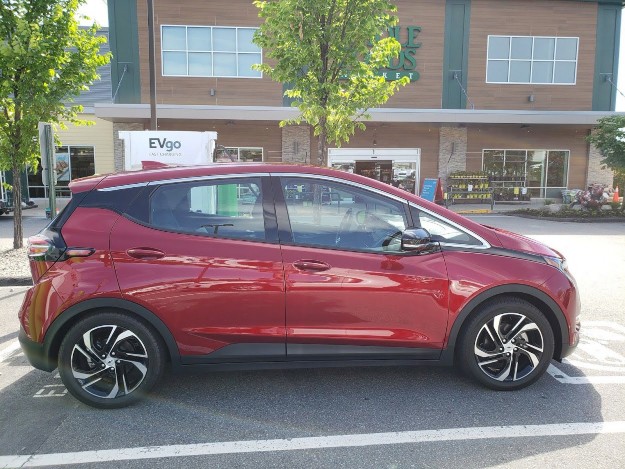
I connected the Bolt to the EVgo-branded DC fast charger. My EVgo RFID card enabled the charge to begin, and I headed into Whole Foods to stock up on free-range chocolate. Some 30 minutes later, while eyeballing some $7 caffeine-free, lightly sweetened, humanely harvested iced tea among a wall of such drinks, my phone buzzed me that charging was complete. I had added 34 miles of range in 29 minutes of charging. That is the fastest I have ever charged. My level 2 home charger (EVSE) adds about 10 miles per hour on the charger. Most public chargers add between 10 and 20 miles per hour of charging. Shockingly, those 34 recouped range miles cost me $10.15. Remember that 797 Hellcat I mentioned? It has a lower cost per mile using gasoline than this EV had just cost me using public electrons. But there is more to that story.
I had publicly charged the Bolt’s battery from 86% to 100%. This is considered a big no-no in the complex world of EV etiquette. We are supposed to stop charging up in public at around 80% because the rate at which a battery can accept a charge drops as it approaches full. If we all charge up to 100%, fewer of us will have a shot at that precious charging spot. However, I wanted to test the Bolt, my EVgo account, and the limits of my Bolt on a rural trip with zero public chargers beyond this point. May the green transportation world forgive my bad behavior. At least I’m not live-parking-Audi-lady.
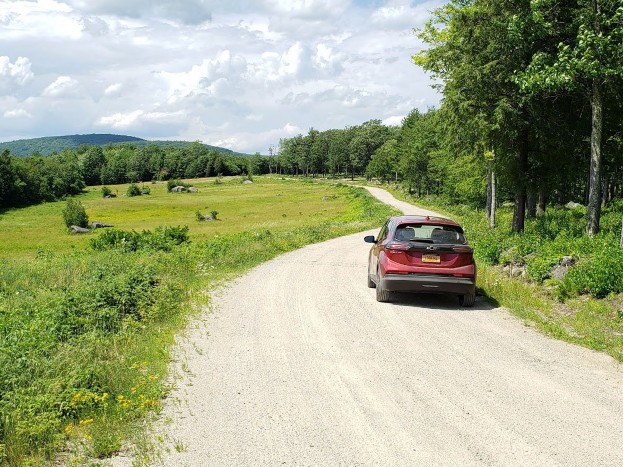
From here, I never had any range anxiety. Despite the heat and my rate of speed of around 65 MPH for most of the trip, the Bolt’s range miles melted away at almost precisely the same rate as actual miles. I arrived with range to spare and put the Bolt on a slow trickle charge using its mobile charger and an external 115 v outlet which adds a paltry 2.5 miles per hour of charging. The general rule when away from home with an EV is ABC. “Always be charging.”
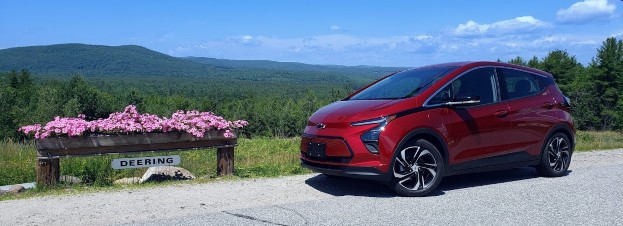
While in the woods with the Bolt, I explored the lakes area, ran some errands, and plotted a course on New Hampshire’s amazing Rt. 149, which is the very definition of a back-country mountain road. The Bolt is a brilliant vehicle. With its low center of gravity, dialed-in suspension, and more torque than most conventionally-powered cars, it is quick, nimble, and a blast on sweeping turns and elevation changes. Best of all, it’s fun at legal speeds, in the way a Miata is also a car that you don’t need to risk your license to enjoy on a spirited drive.
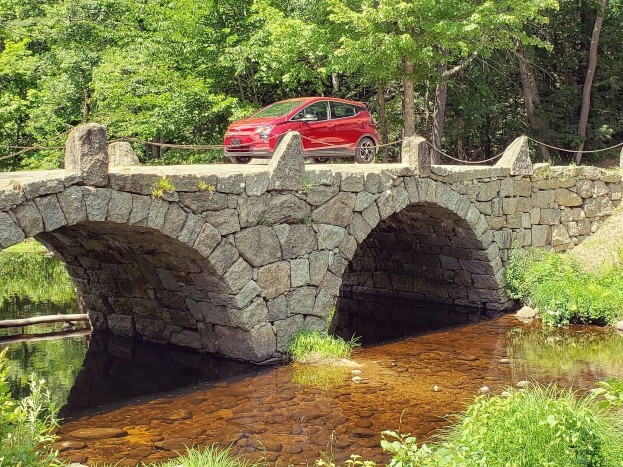
In New England, Bolt LTs like the one I tested had been costing consumers about $18K after the $2,500 state EV rebate for years. This despite there being no federal tax incentive for General Motors vehicles anymore. With the Bolt’s new for ’22 upgrades, and the pending changes to the tax laws, GM has upped that cost to around $28K. Still a fair price for such a capable and enjoyable vehicle, in my opinion.
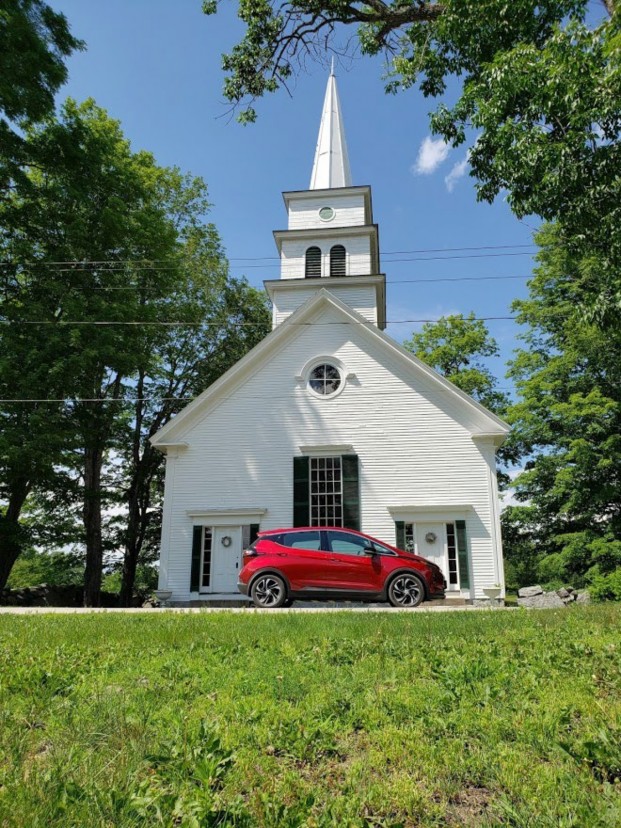
It will be some time before America outside of California and a handful of large metro areas have any meaningful public EV charging infrastructure. Rural New Hampshire has nearly none. The cars are ready now, the buyers are ready now, but some things still need to be sorted in our culture. Do we really want to charge in public? Are plug-in hybrids a better solution for rural green vehicle enthusiasts? These and more questions remain. All I wanted to know this week was could I enjoy driving a Chevy Bolt 100 miles heading in the opposite direction of the public charging options Metro Boston residents enjoy. The answer is “yes!”
If you use TikTok and would like to see a quick video, click this link.
John Goreham is a long-time New England Motor Press Association member and recovering engineer. John's interest in EVs goes back to 1990 when he designed the thermal control system for an EV battery as part of an academic team. After earning his mechanical engineering degree, John completed a marketing program at Northeastern University and worked with automotive component manufacturers, in the semiconductor industry, and in biotech. In addition to being a regular Car Talk contributor, John's work has appeared in print in dozens of American newspapers and he provides reviews to many vehicle shopping sites. You can follow John on TikTok @Tokncars, and view his credentials at Linked In.


